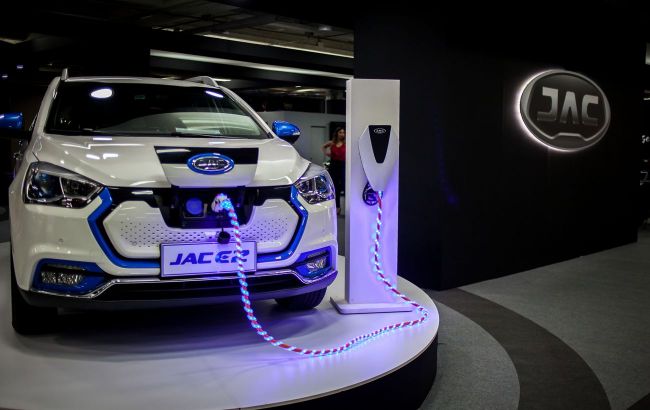EU and China negotiating minimum prices for electric vehicles from China
 Illustrative photo: EU and China negotiating electric vehicle prices (Getty Images)
Illustrative photo: EU and China negotiating electric vehicle prices (Getty Images)
The European Union and China have agreed to consider the possibility of setting minimum prices for Chinese-made electric vehicles. These could replace the tariffs that the EU imposed on electric cars last year, Reuters informs.
Negotiations on electric vehicle pricing have already begun. EU Trade Commissioner Maroš Šefčovič held a conversation with Chinese Commerce Minister Wang Wentao within the past 24 hours. During the discussion, both sides agreed to consider introducing minimum prices, according to a spokesperson for the European Commission.
China’s Ministry of Commerce stated that the negotiations should begin “immediately.”
Earlier, Šefčovič noted that any minimum price mechanism must be just as effective and enforceable as the EU tariffs.
EU tariff increase on Chinese electric vehicles
In October last year, the EU raised tariffs on Chinese-made electric vehicles to as high as 45.3%. At the same time, Brussels and Beijing began discussing the possibility of lifting these tariffs if China agrees to minimum pricing commitments on imported cars.
Current EU tariff rates are as follows:
-
17% for BYD
-
18.8% for Geely
-
35.3% for SAIC
All of these are in addition to the EU’s standard 10% import duty on cars.
However, the European Commission has stated it is ready to continue negotiations with China on alternatives to the tariffs.
Reuters adds that these talks on a potential compromise are taking place against the backdrop of US President Donald Trump launching a new trade war with several of America’s closest partners, including the EU and China.
Trump’s tariffs
As a reminder, on April 2, US President Donald Trump imposed tariffs on imports from a number of countries, ranging from 10% to 49%, depending on the country.
On April 7, it was reported that Trump had introduced additional tariffs on imported goods from the EU, set at 20%.
However, the highest tariffs were imposed on China. In response, on April 9, China introduced tariffs on American goods at a rate of 84%.
Later, it was revealed that the US had raised import duties on Chinese goods to 104%. Trump then increased the tariffs further to 125% “for disrespect,” according to his statement.
Following the most recent decision by President Trump, the total import tariffs on Chinese goods now stand at 145%, as explained by the White House.
Notably, yesterday Trump announced a 90-day pause on new tariffs for all countries except China, to allow time for negotiations and a chance to avoid further escalation.

